First Monday : un dossier récriminant sur le Web 2.0
 L’erreur du critique est de chercher l’essence, et de nier l’existence. (Alain)
L’erreur du critique est de chercher l’essence, et de nier l’existence. (Alain)
L’engouement pour le Web 2.0 m’a toujours laissé sur le qui-vive, sans doute par scepticisme des mouvements de foule. Je suis conscient de contribuer au phénomène à l’occasion en signalant des ressources en ligne qui m’attirent par leur créativité, leur facilitation des technologies, ou leur incitation à la collaboration et au partage. Mais je ne suis pas aveugle à leurs lacunes. Or, voici que le plus récent numéro de First Monday contient une tapée d’articles qui jettent un regard critique sur le Web 2.0.
- Michael Zimmer; Preface: Critical Perspectives on Web 2.0
Web 2.0 also embodies a set of unintended consequences, including the increased flow of personal information across networks, the diffusion of one’s identity across fractured spaces, the emergence of powerful tools for peer surveillance, the exploitation of free labor for commercial gain, and the fear of increased corporatization of online social and collaborative spaces and outputs.
- Trebor Scholz; Market Ideology and the Myths of Web 2.0
The Web 2.0 Ideology [...] does not solely embrace a series of ethical assumptions about media, culture, and technology that worships the creative amateur [5]. This ideology is a framing device of professional elites that define what enters the public discourse about the impact of the Internet on society.
- Matthew Allen; Web 2.0: An argument against convergence
Web 2.0 suggests that, in the struggles for corporate domination and control over technologies that circulate information through our cultures, and make meanings from that information, there is no unanimity of interests between those who see themselves as old media, making new, and those who by adopting and working within the frame of Web 2.0, seek to make media something else altogether.
- Kylie Jarrett; Interactivity is Evil! A critical investigation of Web 2.0
The hyperbole of this title [...] is used as a rhetorical tool to draw attention to the need to continually interrogate the fabric of digital media within the particular sociohistorical moment of its emergence and use.
- Soren Mork Petersen; Loser Generated Content: From Participation to Exploitation
The Internet functions as a doubleedged sword; the infrastructure does foster democracy, participation, joy, creativity and sometimes creates zones of piracy. But, at the same time, it has become evident how this same infrastructure also enables companies easily to piggyback on user generated content.
- Michael Zimmer; The Externalities of Search 2.0: The Emerging Privacy Threats When the Drive for the Perfect Search Engine Meets Web 2.0
By amassing a tantalizing collection of, admittedly, innovative and useful Web 2.0 tools, the un quest to achieve Search 2.0 has resulted in the emergence of a robust infrastructure of dataveillance that can quickly be internalized and become the basis of disciplinary social control.
- Anders Albrechtslund; Online Social Networking as Participatory Surveillance
Online social networking is anchored in surveillance practices. This gives us an opportunity to challenge conventional understandings of surveillance that often focus on control and disempowerment. In the context of online social networking, surveillance is something potentially empowering, subjectivity building and even playful what I call participatory surveillance.
- David Silver; History, Hype, and Hope: An Afterward
This is a generation of content creators, a generation of young people who with the help of Web 2.0 tools know how to create content, how to share content, and how to converse about content. [...] This is a new generation with new writeable behaviors and it’s hard not to be hopeful about that.
La critique est nécessaire à l’évolution de l’activité humaine. Du coup, je ne m’inquiète pas outre mesure des jeux de coulisse du Web 2.0. Il y aura toujours des gens pour exploiter commercialement les lieux de rassemblement. Mais l’union fait la force : le maillage Internet, en disséminant l’information et en liant les utilisateurs, s’avère un contrepoids intéressant aux subterfuges du marketing. Le présent article s’inscrit dans cette foulée. Le Web est comme un enfant qui grandit : tout en restant vigilant à ses moindres gestes, il ne faut pas s’inquiéter de chaque faux pas, mais garder en perspective l’adulte qu’il deviendra.
Pour le moment, le Web 2.0 offre néanmoins de formidables ressources aux écoles. Pour excellent survol des avantages du Web 2.0 en éducation, voyez le billet de Steve Hargadon : Web 2.0 Is the Future of Education (source : Stephen Downes).
(Image thématique : A Passage from the Higher Criticism, par Frank Stella)
Par ricochet :
25 applications Web 2.0 pour apprendre
Les meilleurs sites Web 2.0 (2007)
Vers l’éducation 2.0
Pourquoi le Web change tout
Vidéoclip : la collaboration dans le Web 2.0
Le partage de son quotidien sur la Toile
Internet comme agent d’émancipation
Vous pouvez suivre les commentaires en réponse à ce billet avec le RSS 2.0 Vous pouvez laisser une réponse, ou trackback.
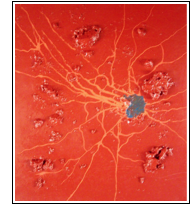
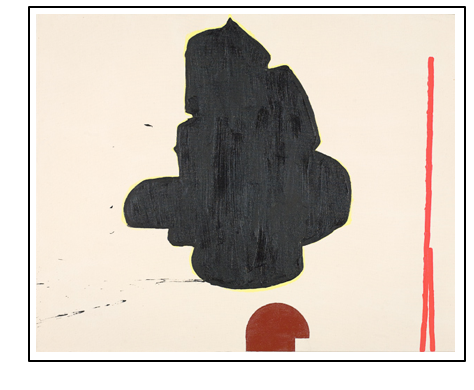


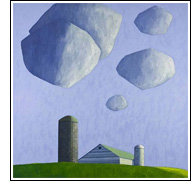
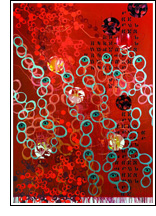
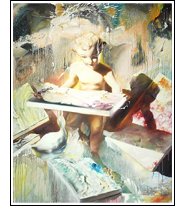
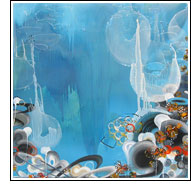

Merci pour tout ces liens !